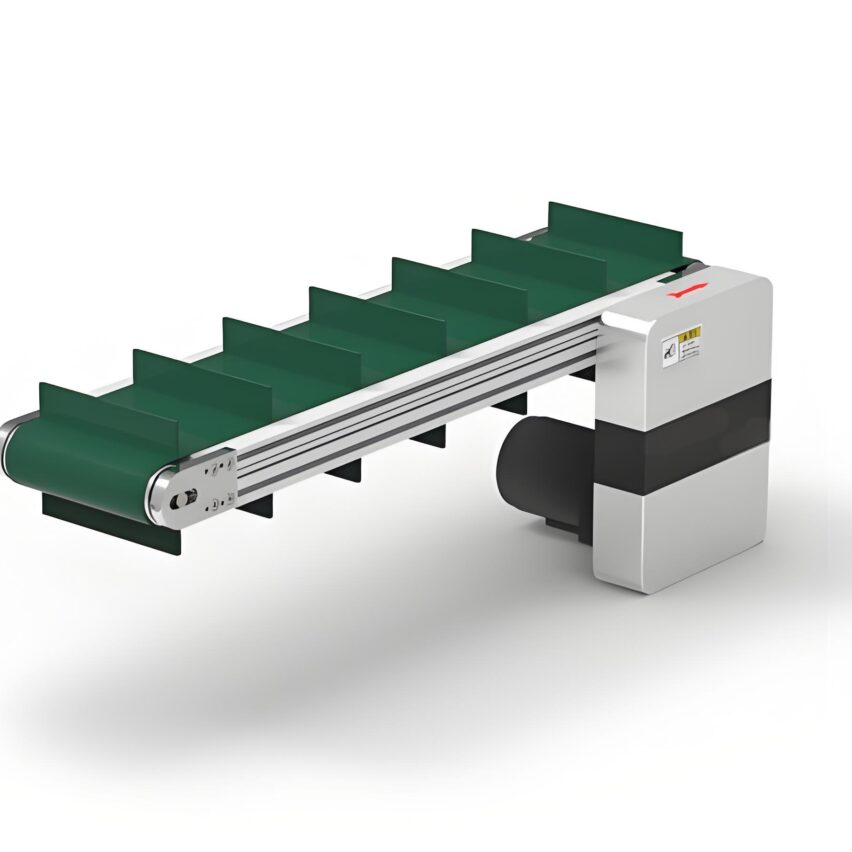In the food processing workshop, a traditional conveyor line caused a 12-hour shutdown of the entire line due to chain plate breakage, with a single-day loss of more than 500,000 yuan - revealing a common pain point in the manufacturing industry.chain conveyorAs the bloodline of industry, its design flaws and maintenance blind spots often become bottlenecks in production capacity. This article will combine cutting-edge industry practices, in-depth analysis of how to release its maximum performance through scientific selection and intelligent operation and maintenance, and incorporate personal insights in the field of automation integration.
I. Structural Characteristics and Selection Guidelines: Accurately Matching Scenario Requirements
Load calculation and material selection
- load-bearing classificationLightweight chain plate (e.g. food, electronics industry) with single point load capacity ≤50kg/m, usingEngineering plastic chain plate(PP/PE material) to meet the hygiene standard; Heavy chain plate (automobile, machinery manufacturing) single point load ≥ 300kg/m, need to chooseWire rope core chain plateImpact resistance.
- environmental adaptation: Pharmaceutical industry preferredStainless steel chain plate(surface mirror polishing), corrosion-resistant and easy to clean; high-temperature workshop (such as casting industry) to choose theAlloy steel chain plateThe upper temperature limit is up to 100°C.
Personal opinion: chain plate selection should follow the "load - environment - process" triangle law, blind pursuit of high strength but increase energy consumption and maintenance costs. After replacing carbon steel chain plate with aramid fibre reinforced chain plate in an automobile factory, the life expectancy has been extended from 1 year to 3 years, and the annual maintenance cost has been reduced by 40%.
Design rules for key parameters
- Width calculation: Bulk material transport bandwidth = maximum material particle size x 2.5; box transport bandwidth = longest side + 50mm (anti-run-off)
- Turning radius design: Inner chain pitch P1 = 12.7 mm, outer P2 = 19.05 mm, inner radius R1 = 600 mm, outer R2 = 900 mm at centre distance D = 300 mm (precise positioning by diagramming method)
- speed matching: Filling line recommended 0.5-5m/min (accuracy ±0.1m), sorting line can be raised to 15m/min (requires frequency control)
II. Customised industry solutions: pain points cracked and innovative practices
| sector | Traditional Pain Points | Technical programme | comparison of effectiveness |
|---|---|---|---|
| food and drink | Contamination from fallen bottles and cans | Seamless welded body + full rubber anti-skid chain | Loss rate 3%→0.5% |
| pharmaceutical cold chain | Drug breakage rate 1.2% | Silicone covered roller + shock absorbing base | Breakage rate ↓ to 0.1% |
| automobile manufacturing | It took 72 hours to change the line | Modular quick release construction + aramid fibre chain plate | Type change reduced to 15 minutes |
| electronic sorting | Over a million errors and omissions per day | RFID chips embedded in chain plate seams | Handling capacity of 8 million pieces per day |
Q: How to solve the material accumulation at the turn?
A: Dual strategy crack:
❶Differential design: Multiple rows of chain plates in parallel (e.g. 3 rows), utilising the speed difference to achieve extrusion-free parallelism.
❷Dynamic transition device: Overlapping mixing chain structure to maintain continuous flow of materials.
III. Installation and maintenance practices: full life cycle management
Four-step debugging method (using the medicine line as an example)
- Pre-installation calibration
- Calibration of chain plate straightness (laser meter deviation ≤ 0.1mm)
- Pre-adjustment of the tensioning device until the initial tension is balanced (too tight increases energy consumption, too loose leads to tooth jumping).
- No-load test run
- 10-20 hour run-in test to monitor sprocket engagement status
- Infrared thermal imager scanning bearing temperature (temperature difference >15℃ immediate shutdown)
- Load Verification
- Step loading to rated load 120% for 72 hours
- X-ray inspection of the state of the wire rope inside the chain plate (replacement if the crack is >0.5mm)
Intelligent maintenance system
- Predictive maintenancePiezoelectric sensors monitor motor current fluctuations (threshold ±15%), providing 2 weeks advance warning of failure.
- "Three Checks, Three Ties" system::
- (soup etc) of the dayTension check (hydraulic tensioning system responds 300% faster than mechanical)
- dailyTightening bolts (torque values according to ISO 898-1)
- every monthParallelism correction (levelling error <±0.5°)
IV. Future trends: from mechanical transmission to data hubs
- digital twinA car company optimised link parameters through 100,000 virtual simulations, reducing energy consumption by 35%.
- Self-supply technologyPiezoelectric Fibre Ribbon Converts Mechanical Vibrations into Electrical Energy with Power Generation Efficiency Surpassing 5%
- human-computer collaboration: AGV automatic loading + robotic arm sorting, to achieve the whole process of unmanned black light factory (an electronic factory to save manpower costs 60%)
Exclusive data: According to the China Machinery Industry Federation, the smart chain conveyor line market size reached 28 billion yuan in 2024, with a compound annual growth rate of more than 12%. head enterprises through theModular inventory enables 48-hour delivery--Future core competence lies inChain link data conversion rateThe single-metre chain plate generates 500MB of operating data per day and can predict faults with an accuracy of 92%.
High-frequency problem solving
Q: How do you balance cost and effectiveness?
A: Adoption30/50/20 budget model::
- 30%Cast drive system (permanent magnet motor + energy return device)
- 50%For intelligent control (AI scheduling algorithm + predictive maintenance platform)
- 20%Expansion modules reserved (e.g. climbing section chain plates)
Q: What signals indicate chainplate failure?
A: Three major high-risk features:
❶ Surface cracking density > 0.5 lines/mm² (especially at joints)
❷ Deformation of chain links resulting in engagement gap >3mm
❸ Sudden increase in operating noise >30dB (baseline value <25dB)
Q: How is food line cleaning compliant?
A: ImplementationTertiary cleaning standards::
- Daily water washing: 80℃ high pressure water gun rinsing chain plate joints
- Weekly disinfestation: 30-minute immersion in food-grade hypochlorite solution
- Monthly in-depth maintenance: disassembly of the chain plate ultrasonic cleaning
(Note: The technical parameters and cases in the article are synthesised from industry white papers and engineering measurement data, and the cited standards include ISO 284:2012, GB/T 10595-2017)













